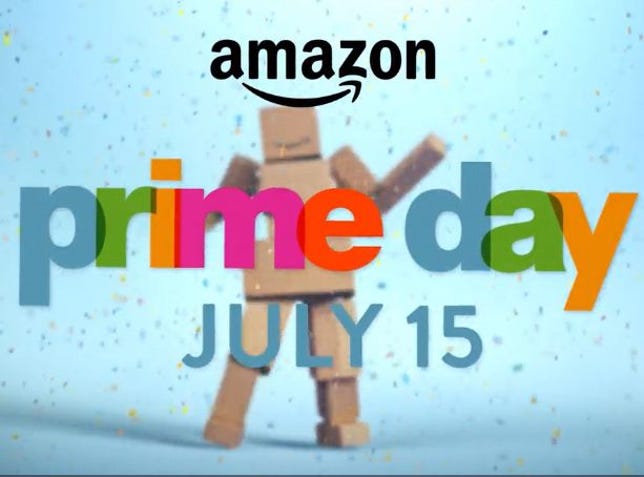
Amazon
Prime Day, a new sales holiday Amazon invented and held Wednesday in the middle of the summer doldrums, proved a huge success for the company.
The e-commerce giant reported Thursday that on its first Prime Day — held to celebrate its 20th anniversary — it sold more units than “the biggest Black Friday ever,” which was in 2014. It also said it had more new members sign up for its Prime membership service than any single day in Amazon history, with hundreds of thousands of new people joining.
“Going into this, we weren’t sure whether Prime Day would be a one-time thing or if it would become an annual event,” Greg Greeley, vice president of Amazon Prime, said in a statement. “After yesterday’s results, we’ll definitely be doing this again.”
Some of the numbers proved staggering, particularly because the sale was only available to Prime members, who pay $99 annually for free, two-day shipping and other benefits. Worldwide order growth jumped 18 percent over Black Friday 2014, as customers ordered 34.4 million items across Prime-eligible countries, breaking all Black Friday records with 398 items ordered per second. The sale moved 47,000 televisions, 51,000 Bose headphones, and 14,000 iRobot Roomba vacuum-cleaning robots — compared with just one unit sold the previous Wednesday.
“In the first time trying this event, Amazon has created a summer shopping holiday as big as Black Friday,” said Scot Wingo, executive chairman of ChannelAdvisor, which provides online tools for sellers on Amazon and eBay. “Amazon has exceeded our expectations for Prime Day.”
Amazon’s tallies Thursday stand in contrast to a rash of comments on social media from customers complaining about a lack of in-demand deals on Prime Day or many items selling out too quickly. The #PrimeDayFail hashtag became popular, as many Twitter users called the event a let down and claimed Amazon was simply trying to clear out undesirable merchandise. Such criticism illustrates the risks and potential rewards for Amazon of making itself the central figure of a random sale in July, instead of coming out with discounts during typical sales holidays, such as Presidents Day or Cyber Monday.
I think @amazon should’ve named this the “useless crap we can’t get rid of sale” #PrimeDayFail. LOL
— Justin Seeley (@JustinSeeley) July 16, 2015
“Shoppers seeking more electronic-focused purchases may have been disappointed by the scattered discounts,” Poonam Goyal, an analyst for Bloomberg Intelligence, said Thursday.
With Walmart and other retailers jumping in to offer rival sales Wednesday to compete with Amazon, the concept of Prime Day may turn into a regular annual summer sales day. If it does, the event could become another critical catalyst for bringing on new Prime members, similar to the holiday shopping season, and help boost Amazon’s revenue during the lighter summer selling period. Prime membership has become a crucial part of Amazon’s growth plans, as Prime customers tend to spend nearly twice as much on Amazon every year than non-Prime customers.
Prime Day — which has been likened to Alibaba’s own manufactured sales event in China called Singles Day — also proves Amazon’s significance for shoppers, with an estimated 44 million US Prime customers helping turn Prime Day into a potential summer shopping day. However, increasing sales on Prime Day may simply shift spending to July and away from the back-to-school season.
For now, Amazon seems pleased enough with its results that it will bring back Prime Day to its members, even the ones who complained.




